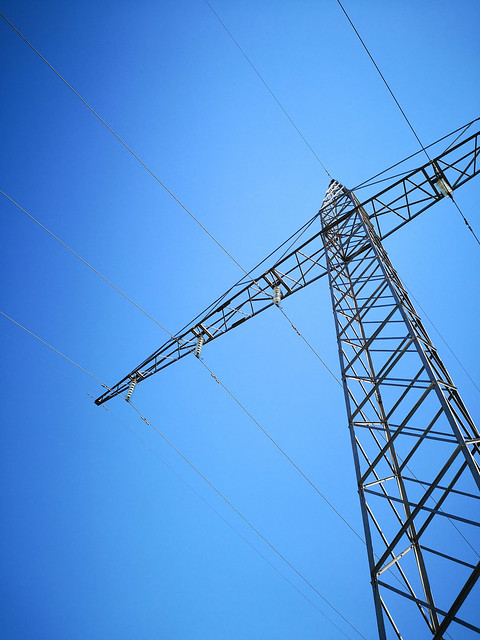Electrical Steel: Properties, Types, Production, and Applications
Electrical steel is a soft magnetic material with enhanced electrical properties that is widely used across applications such as small relays, solenoids, electric motors, generators, and many other electromagnetic devices. Electrical steel is also referred to as silicon steel, transformer steel, or lamination steel. It is used mainly in electrical power distribution systems and in automotive industries [1].
What is electrical steel?

Electrical steel is a ferromagnetic material made up of iron that contains varying amounts of silicon (Si) that range from 1% to 6.5%. The development of electrical steels was brought on by electrical devices requiring steels that can decrease the dissipation of heat, an issue that results in energy wastage. Iron was found to be the most economically sound option but its impurities are not optimal. It was found that the addition of silicon increases resistivity, improves permeability, and decreases hysteresis loss. The most widely used commercially available electrical steel contains about 3.25% Si as higher silicon content tends to make the resulting material too brittle for cold rolling. Electrical steel with 6.5% Si has the most improved magnetic and electrical properties, but additional thermomechanical processes are required in order to overcome its brittleness and limited ductility [1] [2].
Properties of electrical steel
The addition of silicon in iron greatly improves the physical properties of electrical steels. Electrical steels have the following desirable properties for supporting the generation, distribution and consumption of electricity:
- High permeability - increased capacity to support magnetic fields
- Low magnetostriction - low tendency to expand or contract in magnetic fields
- High electrical resistivity - lessens the core loss by reducing the eddy current component
- Decreased hysteresis loss - low hysteresis loss means less wasted energy in the form of heat from alternating magnetising force [2]
Types of electrical steel
Non-oriented fully processed electrical steel
Non-oriented, fully processed electrical steel has varying silicon levels that range from 0.5% to 3.25% Si. It has uniform magnetic properties in all directions. This type of electrical steel does not require recrystallisation processes to develop its properties. The low silicon alloy grades provide better magnetic permeability and thermal conductivity. For high alloy grades, better performance is expected in high frequencies, with very low losses. This type is excellent for magnetic circuits in motors, transformers, and electrical system housing. This fully processed type provides difficulty in punchability due to a completed annealing process. Organic coatings are added to improve lubrication in the punching process [1].
Non-oriented semi-processed electrical steel
Non-oriented semi-processed electrical steels are largely non-silicon alloyed steel and are annealed at low temperatures after the final cold rolling. The end-user, however, has to provide the final stress-relief anneal according to the steel’s intended application. The punchability of this electrical steel type is better than the non-oriented fully processed type, so organic coatings are not required. Non-oriented semi-processed grades are good core materials for small rotors, stators, and small power transformers [3].
Grain-oriented electrical steel
Grain-oriented electrical steels are composed of iron with 3% Si content with grains oriented to deliver high permeability and low energy loss. Grain-oriented grades have strong crystallographic properties. This type undergoes a recrystallisation process resulting in an enhanced grain structure that exhibits better magnetic properties in the rolling direction of the sheet. Grain-oriented steels are mostly used for non-rotating applications, such as transformers [4].
Electrical steel production

Electrical steels are typically cast continuously or melted in oxygen furnaces. They are then hot rolled as they pass through the annealing and descaling process line, where dirt and scale are removed from the surface. Afterwards, they go through cold reduction, where the thickness of the steel is reduced and corrected according to the end-user specifications. Subsequently, carbon content within the steel is reduced by a decarburising anneal, in which the steel roll is heated in a mixture of hydrogen, nitrogen, and water vapour. Other contaminants, like sulphur, are removed in this process, as well, resulting in a less brittle material. For grain-oriented type steel, the coil undergoes a high-temperature coil anneal (HTCA) at about 1100°C in order to achieve the required magnetic properties and grain growth [5].
What is electrical steel used for?
Electrical steels, with their advantageous magnetic performance, are vital in many electrical systems. Below are some of the applications where electrical steel cores are used [6]:
Rotating machines:
- Electrical vehicle driving motors
- Hermetic motors
- Alternating current (AC) motors
- Intermittent service motors
Static machines:
- Power and distribution transformers
- Reactors and magnetic amplifiers
- Welding transformers
- Audio transformers
- Current transformers
- Magnetic switches and relays
- Electrical ballast
Sources
[1] A. Goldman, Handbook of Modern Ferromagnetic Materials, Boston: Springer Science & Media, 1999
[2] T. Ros-Yanez, Y. Houbaert, O. Fischer, J. Schneider, “Production of high silicon steel for electrical applications by thermomechanical processing,” Journal of Materials Processing Technology, vol. 143-144, Dec., pp. 916-921, 2003.
[3] “Electrical steel,” TATASTEEL, n.d. [Online] Available: https://www.tatasteeleurope.com/en/products/engineering/electrical-steel [Accessed Aug. 29, 2019]
[4] D. Raabe, “Electrical steels - Iron-Silicon Transformer Steels,” n.d. [Online]. Available: http://www.dierk-raabe.com/electrical-steels-fe-3-si/ [Accessed Aug. 29, 2019]
[5] V. L. Bemmer, “The Properties of Electrical Steels and Their Coatings,” PhD Thesis, Cardiff University, Cardiff, Wales, 2013.
[6] “Electrical Steel Sheets,” JFE Steel Corp, n.d. [Online] Available: https://www.jfe-steel.co.jp/en/products/electrical/catalog/f1e-001.pdf [Accessed Aug. 29, 2019]